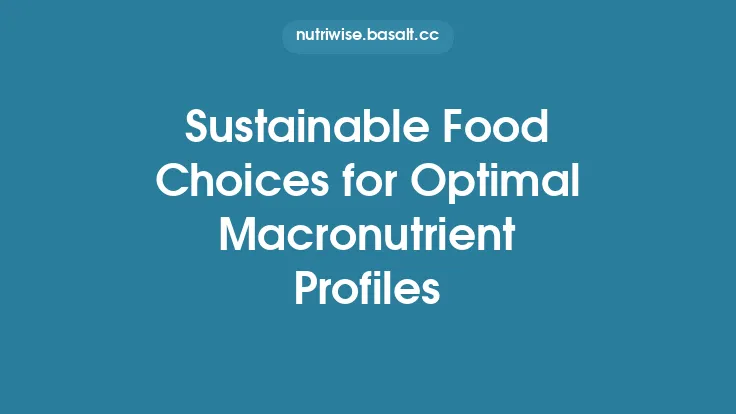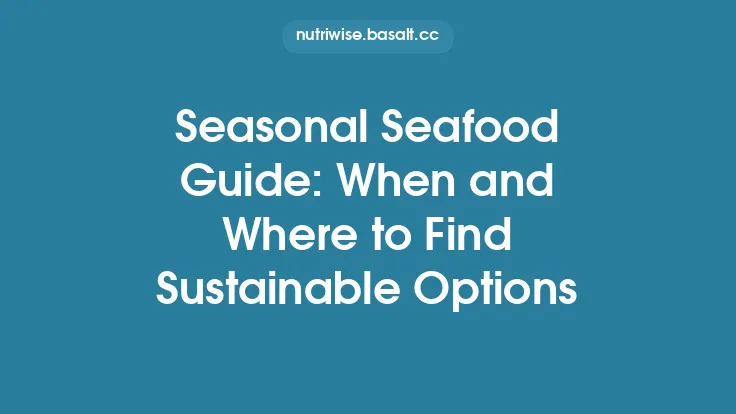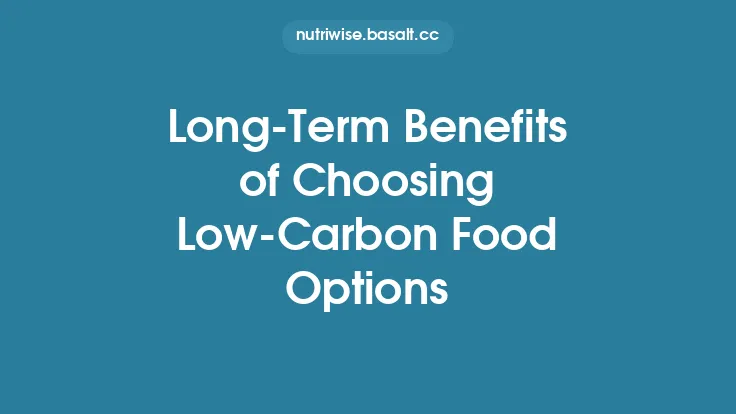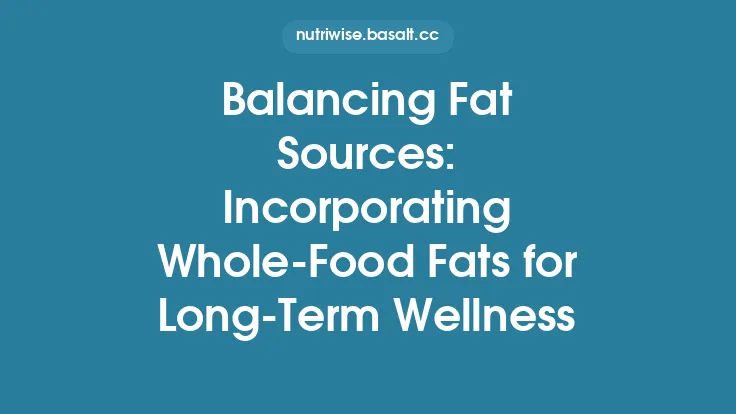Plant‑based eating isn’t just a trend; it’s a powerful lever for reducing the environmental footprint of our meals while still delivering the flavors, textures, and nutrition we crave. A weekly planner that centers sustainable, plant‑focused choices can streamline grocery trips, cut down on waste, and make it easier to meet nutritional needs without relying on animal‑derived products. Below is a comprehensive guide to designing and using such a planner, complete with practical tips, scientific insights, and adaptable templates that can fit a variety of household routines.
Why Plant‑Based Choices Matter for Sustainability
The production of animal‑based foods typically requires more land, water, and energy than plant‑derived alternatives. According to the Food and Agriculture Organization, livestock accounts for roughly 14.5 % of global greenhouse‑gas emissions, while plant agriculture contributes a fraction of that amount. Shifting even a portion of weekly meals to beans, lentils, nuts, seeds, whole grains, and vegetables can:
- Lower carbon emissions – Plant proteins emit 3–10 times less CO₂ per kilogram than beef or pork.
- Conserve water – Producing a kilogram of wheat uses about 1,500 L of water, compared with 15,000 L for the same weight of beef.
- Preserve biodiversity – Reduced demand for pastureland curtails deforestation and habitat loss.
A planner that foregrounds these choices helps translate abstract sustainability goals into concrete, repeatable actions.
Core Principles of a Sustainable Plant‑Based Weekly Planner
- Seasonality First – Prioritize produce that is in peak season locally; it’s fresher, cheaper, and carries a smaller carbon footprint.
- Whole‑Food Emphasis – Focus on minimally processed ingredients (e.g., whole beans, grains, fresh vegetables) to avoid the hidden energy costs of industrial processing.
- Diversity of Plant Proteins – Rotate legumes, soy products, nuts, seeds, and whole grains to ensure a broad amino‑acid profile.
- Zero‑Waste Mindset – Plan for ingredient overlap across meals to use every part of a vegetable (stems, leaves, peels) and minimize leftovers.
- Energy‑Efficient Cooking – Incorporate batch‑cooking methods that use lower heat for longer periods (e.g., slow‑cooker stews) or leverage residual heat (e.g., insulated pots).
Embedding these principles into the planner’s structure makes sustainable decision‑making automatic rather than an after‑thought.
Building a Balanced Plant‑Based Menu: Macronutrients and Micronutrients
While the planner’s primary focus is sustainability, nutritional adequacy remains essential. A well‑rounded plant‑based menu should address:
| Nutrient | Primary Plant Sources | Planning Tips |
|---|---|---|
| Protein | Lentils, chickpeas, tempeh, tofu, edamame, quinoa, hemp seeds | Include at least one protein‑rich component per main dish; combine legumes with grains for a complete amino‑acid profile. |
| Iron | Dark leafy greens, lentils, pumpkin seeds, fortified cereals | Pair iron‑rich foods with vitamin C sources (citrus, bell peppers) to boost absorption. |
| Calcium | Fortified plant milks, tofu set with calcium sulfate, kale, bok choy, almonds | Schedule calcium‑rich foods across the week; consider a daily serving of fortified milk or yogurt alternatives. |
| Omega‑3 | Flaxseeds, chia seeds, walnuts, algae oil | Sprinkle ground flax or chia into smoothies, oatmeal, or baked goods. |
| Vitamin B12 | Fortified nutritional yeast, fortified plant milks, supplements | Mark fortified items clearly in the planner to ensure regular intake. |
| Zinc | Chickpeas, pumpkin seeds, cashews, oats | Include a zinc source in at least three meals per week. |
By allocating specific columns or checkboxes for these nutrient groups, the planner can serve as a quick visual cue without turning into a full macro‑tracking sheet.
Selecting Seasonal and Locally Sourced Ingredients
- Create a Seasonal Produce Calendar – List the months when key vegetables and fruits are at their peak in your region.
- Identify Local Farmers’ Markets and CSAs – Note the days and locations where you can source directly from growers.
- Highlight “First‑Pick” Items – In the planner, use a color‑coded system (e.g., green shading) to flag produce that’s both in season and locally available for that week.
This approach reduces transportation emissions and often yields better flavor and nutrient density.
Reducing Food Waste Through Strategic Planning
- Ingredient Overlap – Design meals that share core components (e.g., a batch of roasted chickpeas can be used in salads, wraps, and grain bowls).
- Portion Forecasting – Estimate realistic serving sizes based on household appetite patterns; avoid “cook‑and‑store” excess that may spoil.
- Utilize Scraps – Allocate a “scrap‑use” slot in the planner for recipes that incorporate stems, leaves, or peels (e.g., carrot‑top pesto, beet greens sauté).
- Leftover Reinvention – Reserve a column for “next‑day repurpose” ideas, such as turning a vegetable stir‑fry into a soup base.
By embedding these tactics directly into the weekly layout, waste reduction becomes a built‑in feature rather than an afterthought.
Structuring the Planner: Layout and Key Sections
A functional plant‑based weekly planner can be broken down into the following blocks:
| Section | Purpose | Example Content |
|---|---|---|
| Weekly Overview | Snapshot of main meals (breakfast, lunch, dinner) | “Mon – Chickpea‑Spinach Curry; Tue – Quinoa‑Veggie Bowl” |
| Ingredient Matrix | List of all ingredients needed for the week, grouped by category (produce, pantry, refrigerated) | “Produce: kale, carrots, sweet potatoes; Pantry: lentils, brown rice” |
| Prep & Cook Timeline | Time‑blocking for batch cooking, soaking beans, pre‑chopping | “Saturday 9 am – Soak black beans (8 h); 10 am – Roast root veg” |
| Nutrient Checkpoints | Quick visual markers for iron, calcium, B12, etc. | “Iron ✔, B12 ✔ (fortified milk)” |
| Zero‑Waste Log | Space to note scraps used or leftovers repurposed | “Carrot tops used in pesto” |
| Reflection & Adjustments | Brief notes on what worked, what didn’t, and ideas for next week | “Add more citrus for iron absorption” |
The planner can be printed on a two‑page spread (left page for days, right page for supporting sections) or adapted to a digital note‑taking app with checkboxes.
Sample Weekly Layout: Day‑by‑Day Overview
| Day | Breakfast | Lunch | Dinner | Snack / Side |
|---|---|---|---|---|
| Monday | Overnight oats with chia, almond milk, berries | Kale‑and‑quinoa salad with roasted chickpeas, lemon‑tahini dressing | Lentil‑sweet potato stew (slow‑cooker) | Apple slices with almond butter |
| Tuesday | Green smoothie (spinach, banana, flaxseed, fortified soy milk) | Whole‑grain wrap with hummus, roasted veg, avocado | Stir‑fried tempeh with broccoli, bell pepper, brown rice | Roasted sea‑salt edamame |
| Wednesday | Savory tofu scramble with mushrooms, tomatoes, whole‑grain toast | Leftover lentil stew topped with fresh cilantro | Veggie‑packed pasta primavera (whole‑wheat) | Mixed nuts |
| Thursday | Buckwheat pancakes with maple syrup, sliced kiwi | Buddha bowl: farro, black beans, roasted cauliflower, tahini drizzle | Coconut‑curry cauliflower “steak” with quinoa | Carrot‑top pesto on crackers |
| Friday | Chia pudding with mango puree, toasted coconut | Mediterranean chickpea salad (cucumber, olives, feta‑style tofu) | Homemade pizza on cauliflower crust with tomato, basil, vegan cheese | Fresh berries |
| Saturday | Muesli with oat milk, pumpkin seeds, dried apricots | Leftover pizza slices, side of mixed greens | BBQ jackfruit tacos with coleslaw, corn tortillas | Guacamole with plantain chips |
| Sunday | Warm quinoa porridge with cinnamon, raisins, almond butter | Hearty vegetable soup (using leftover veg scraps) | Stuffed bell peppers (brown rice, lentils, herbs) | Dark chocolate square |
The above example demonstrates ingredient reuse (lentils, quinoa, chickpeas) and seasonal produce (kale, carrots, sweet potatoes) while maintaining variety.
Incorporating Diverse Plant Proteins
Relying on a single protein source can lead to monotony and potential nutrient gaps. Rotate the following categories throughout the month:
- Legumes – Split peas, lentils, various beans (black, kidney, cannellini).
- Soy Products – Tofu (silken for sauces, firm for grilling), tempeh, edamame.
- Whole Grains – Quinoa, amaranth, farro, teff (all contain notable protein).
- Nuts & Seeds – Hemp seeds (complete protein), pumpkin seeds, almonds, peanuts.
- Mycoprotein – Products like Quorn (if vegan‑certified) provide a meat‑like texture.
When planning, assign each day a “protein theme” (e.g., “Legume Monday,” “Soy Thursday”) to ensure balanced exposure.
Cooking Techniques That Preserve Nutrients and Minimize Energy Use
| Technique | Sustainability Benefit | Nutrient Preservation |
|---|---|---|
| Steaming | Uses less water and energy than boiling; retains shape of vegetables. | Preserves water‑soluble vitamins (C, B‑complex). |
| Pressure Cooking | Reduces cooking time dramatically, saving gas/electricity. | Maintains mineral content; reduces antinutrient levels in beans. |
| Batch Roasting | One oven session can produce multiple components (root veg, tofu, nuts). | Enhances flavor through caramelization while keeping fiber intact. |
| Cold‑Fermentation | Minimal energy; creates probiotic‑rich foods (sauerkraut, kimchi). | Increases bioavailability of vitamins and minerals. |
| One‑Pot Meals | Fewer dishes, less water for cleaning, lower overall heat usage. | Allows flavors to meld, often improving nutrient absorption (e.g., iron from beans with vitamin C from tomatoes). |
In the planner’s prep timeline, allocate specific techniques to each recipe to keep energy consumption transparent.
Storage Strategies for Fresh Produce and Prepared Meals
- Root Vegetables – Keep in a cool, dark drawer with high humidity; they stay fresh 4–6 weeks.
- Leafy Greens – Wrap in a paper towel inside a perforated bag; store in the crisper to extend life 5–7 days.
- Cooked Legumes & Grains – Portion into airtight containers; refrigerate for up to 5 days or freeze for 3 months.
- Prepared Sauces – Small glass jars with tight lids preserve flavor; label with date for quick rotation.
- Nuts & Seeds – Store in the freezer to prevent rancidity, especially in warm climates.
A dedicated “Storage” column in the planner can remind you where each item belongs, reducing spoilage.
Shopping List Integration: From Planner to Pantry
- Auto‑Populate from Ingredient Matrix – Transfer the weekly ingredient list directly onto a printable grocery sheet, grouping items by store section (produce, bulk, refrigerated).
- Check Off as You Shop – Use tick boxes to confirm each item, preventing duplicate purchases.
- Add “Optional Extras” – Include a small space for impulse‑buy items that still align with plant‑based sustainability (e.g., seasonal herbs).
By linking the planner to the shopping list, you eliminate the need for separate note‑taking and keep the focus on intentional, waste‑free buying.
Adapting the Planner for Different Lifestyles and Dietary Preferences
- Busy Professionals – Emphasize quick‑prep breakfasts and make‑ahead lunches; allocate a 30‑minute “night‑prep” slot for chopping veg.
- Active Athletes – Highlight higher‑protein plant foods (tempeh, soy yogurt) and incorporate carbohydrate‑dense options (sweet potatoes, oats) around training days.
- Older Adults – Prioritize calcium‑rich foods and easy‑to‑chew preparations (soft‑cooked legumes, pureed soups).
- Allergies & Intolerances – Use color‑coded symbols to flag nut‑free, soy‑free, or gluten‑free meals within the weekly view.
The planner’s modular design allows you to swap sections or add custom notes without overhauling the entire template.
Monitoring Progress and Making Iterative Improvements
While the planner is not a full‑blown tracking system, a brief weekly reflection can highlight patterns:
- What ingredients were under‑used? – Adjust future menus to increase utilization.
- Which meals felt most satisfying? – Replicate flavor profiles or cooking methods that resonated.
- Did any waste occur? – Identify root causes (over‑buying, improper storage) and tweak the ingredient matrix.
Documenting these insights in the “Reflection & Adjustments” area creates a feedback loop that gradually refines sustainability outcomes.
Tools and Resources to Enhance Your Plant‑Based Planning
- Seasonal Produce Apps – e.g., “Seasonal Food Guide” (free) for real‑time local harvest data.
- Nutrient Databases – USDA FoodData Central for quick lookup of iron, calcium, B12 content in fortified foods.
- Batch‑Cooking Guides – Online tutorials on pressure‑cooking beans and grains efficiently.
- Community Recipe Swaps – Join plant‑based forums or local co‑ops to exchange ideas for zero‑waste meals.
Integrating these resources with your planner keeps the process fresh, evidence‑based, and socially connected.
By embedding sustainability principles, nutrient awareness, and waste‑reduction tactics into a weekly plant‑based planner, you create a living document that not only simplifies meal preparation but also contributes to a healthier planet. The structure outlined above can be printed, adapted to a digital note‑taking platform, or customized to fit any household’s rhythm—making sustainable, plant‑focused eating an achievable habit rather than a fleeting goal.




